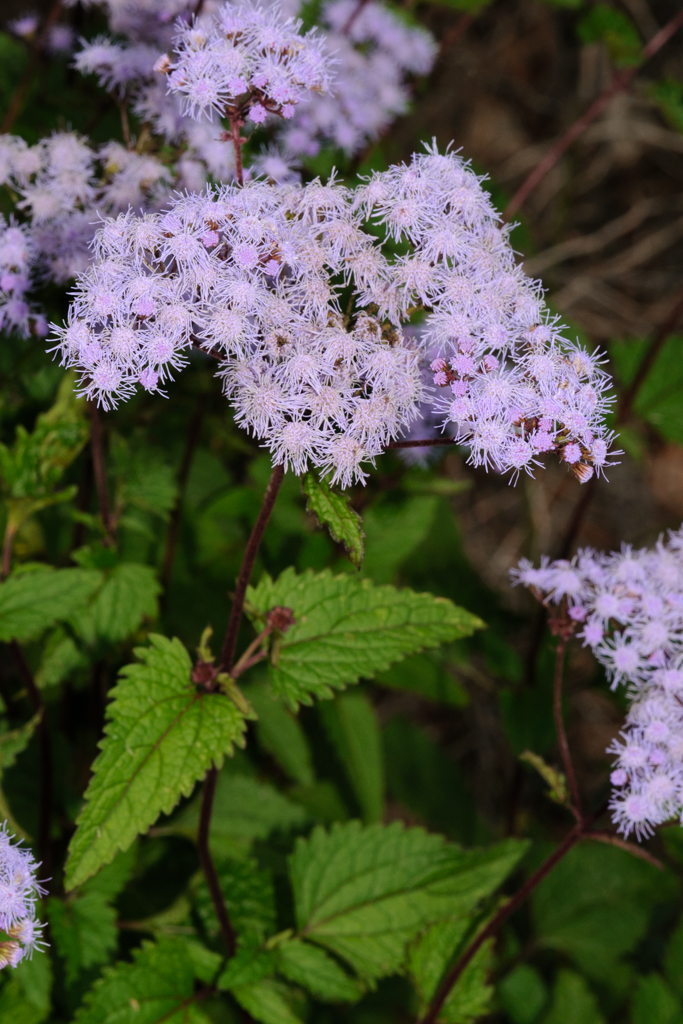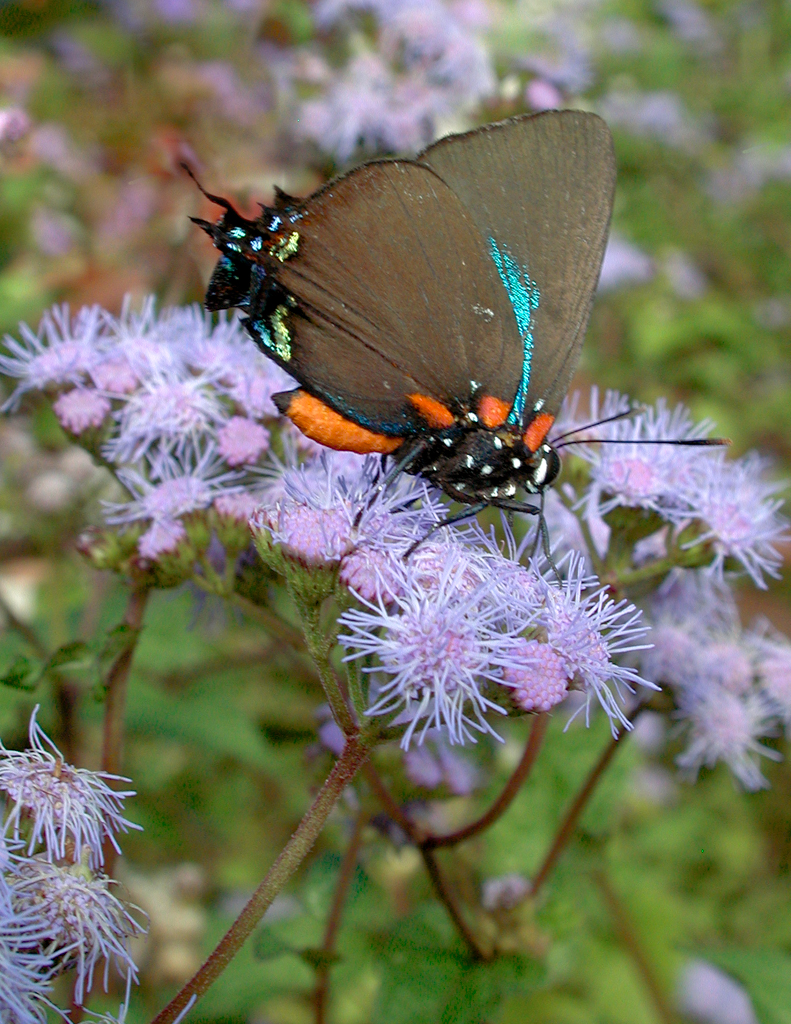October is the premier wildflower month in the Panhandle. Nighttime temperatures drop, days shorten, pollinators emerge, and many native plants explode into flower. Of all the native fall-flowering Panhandle wildflowers, maybe the most striking is currently in full bloom, the Mistflower (Conoclinium coelestinum)!
Mistflower is a low growing, spreading native (1-2’ in height) found in sunny, moist areas of meadows and near rivers, ponds, and creeks throughout much of the United States from New York to Florida and even west as far as Texas and Nebraska. This common native wildflower is conspicuously one of the few native plants in our area that has blue flowers, making Mistflower easy to spot in a sea of yellow, orange, purple, pink, and white wildflowers. The flowers appear as little puffs of purply-blue due to the lack of ray florets (think of the outer yellow “petals” of sunflowers), possessing only disk florets (think of the inner part of sunflower heads) with long blue, fuzzy-appearing stamens. Mistflower is attractive to more than just wildflower watchers as well, it’s a magnet for nectar-seeking butterflies such as the Eastern Swallowtails, Great Purple and Juniper Hairstreaks, and others.
As lovely as Mistflower is in the wild, it’s probably best left for folks enjoy there, especially those who prefer an orderly yard. Mistflower will indeed grow great in moist areas of pollinator gardens and landscapes, requiring only ample sunlight and rainfall, but it is very aggressive. Its spreading nature via its rhizomatous root system and prolific seed production often lead to it becoming a weedy nuisance in more manicured landscapes. But, if chaos and fall bursts of blue erupting at random throughout your garden don’t bother you, by all means, seek out Mistflower for purchase through seed catalogs and local native nurseries. For more information on Mistflower and other fall-blooming native wildflowers, contact us at the UF/IFAS Calhoun County Extension office! Happy Gardening.
- Is it Colder than Last Year?What the Data Says. - January 17, 2025
- Florida’s Fall Foliage – Why 2024 Brought the Best Show in Recent History - December 20, 2024
- Poor Food Plot Performance – 3 Simple Solutions to Common Problems - January 12, 2024


